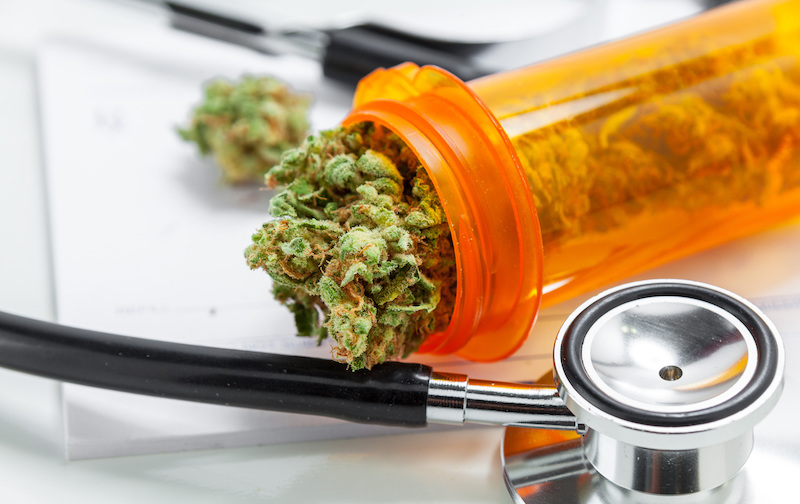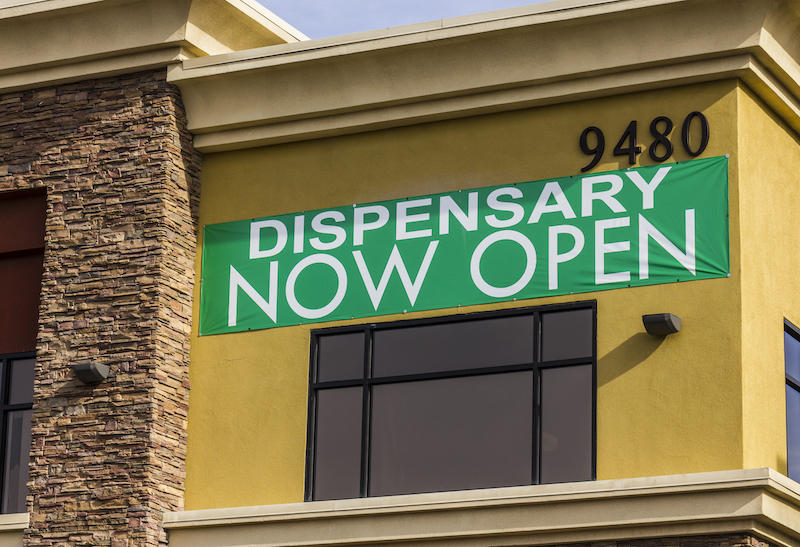A recent study casts doubt on the benefits of medical weed use, but the results demand a closer look
By Jason Langendorf
A recently published study found that the acquisition of a medical marijuana card contributes to the incidence and severity of cannabis use disorder (CUD) while resulting in no significant improvement in pain, anxiety or depressive symptoms. But the story doesn’t end there.
In the study, published on the JAMA Network, researchers conducted a randomized clinical trial involving 186 participants to examine the risks and benefits of obtaining a medical marijuana card. Authors cited concerns about the lack of strong clinical literature to support the use of medical cannabis, despite “the legalization and widespread use of cannabis products for a variety of medical concerns in the U.S.”
“There needs to be better guidance to patients around a system that currently allows them to choose their own products, decide their own dosing and often receive no professional follow-up care.”
—Jodi Gilman, JAMA study corresponding author
“Our study underscores the need for better decision-making about whether to begin to use cannabis for specific medical complaints, particularly mood and anxiety disorders, which are associated with an increased risk of [CUD],” said Jodi Gilman, PhD, an associate professor of psychiatry at Harvard Medical School and the study’s corresponding author. “There needs to be better guidance to patients around a system that currently allows them to choose their own products, decide their own dosing and often receive no professional follow-up care.”
A Closer Look
News of the study generated headlines such as “Medical Marijuana Doesn’t Help Anxiety and Depression and Doubles Addiction Risk, New Study Finds” and “Medical Marijuana Linked to Rapid Onset of Cannabis Use Disorder.” But there’s a catch: Closer analysis of the study reveals that these broad assessments aren’t quite true.
In the study, one group of participants obtained a medical marijuana card immediately after randomization. Another group was delayed, asked to wait 12 weeks before obtaining a card. The participants were able to select the cannabis products of their choice from a dispensary, as well as the dose and the frequency of use.
The results among study participants who developed a CUD—“almost 2.9-fold higher in the immediate card acquisition group than in the delayed card acquisition group,” according to researchers—are indeed worthy of a closer look. But although researchers may not have found statistically significant evidence of improvement in reports of participants’ pain, anxiety and depressive symptoms, those numbers did improve slightly.
Ryan Vandrey, PhD., professor of psychiatry and behavioral sciences at Johns Hopkins University, calls the study “a really valuable data set” and “a great example of what we need to be doing in terms of understanding the impact at the personal level of cannabis legalization and medical cannabis use, because there’s not enough of that.”

He also points out that the results of the study can be easily misinterpreted. “The whole paper was really focused on self-reported symptoms of cannabis use disorder,” Vandrey says. “And cannabis use disorder is an absolute real concern. But they didn’t spend much time drilling down on the individual symptoms of cannabis use disorder, the criteria of cannabis use disorder that were endorsed by the individual patients in this study, or really the rate at which these things were observed.
“If you look at symptoms of depression, they improve over time. If you look at symptoms of anxiety, qualitatively, they improve over time. And if you look at the ratings of quality of life, they improve over time. So when the interpretation of this data is that access to medical cannabis harms these folks because you see an increase in cannabis use disorder, I question that to some degree. Individuals can have both harm and benefit at the same time.”
To that end, the JAMA study authors write that “[t]he immediate card acquisition group had greater score improvement in mental wellbeing.” The study also notes that “it is unknown whether adults with a medical marijuana card would develop CUD at a lower rate than recreational users.” What the researchers don’t mention is that it’s unknown whether people with access to a medical marijuana card would develop CUD at a higher rate.
Vandrey notes a few potentially problematic aspects of the interpretation of the study. Participants self-reported, for instance, and researchers had no control over the types of cannabis products and route of administration they used. Additionally, of the 11 criteria for CUD, most study participants who endorsed any symptoms cited only one or two. Plus, many participants were already using cannabis when the study began.
“These [subjects] already had a pattern of cannabis use that pre-existed their legal access to it,” Vandrey says. “So it’s not as clean of an evaluation of the impact of initiating medical cannabis use.”
A Call for More Medical Marijuana Research
Vandrey doesn’t doubt the study authors’ methods or intentions—“All of the data is in there that needs to be in there,” he says—and he points out that word limits in JAMA articles can make it difficult to bring detail to such a nuanced subject.
“What we need is more studies like this, so we can understand and kind of predict harm versus benefit.”
—Ryan Vandrey, Johns Hopkins University
In fact, Vandrey calls for more research like Gilman’s study, which he says would contribute to a much larger and broader composite of data that could lead to better treatment approaches and policy.
“I think it’s too late to pump the brakes on access,” Vandrey says. “Access is there, and there’s overwhelming public support for access to medical cannabis. What we need is more studies like this so we can understand and kind of predict harm versus benefit, and use that to educate both patients and providers on what’s the best way to go about this for dozens of different health purposes that people are looking to use this for.”
Top photo: Shutterstock; bottom photo: Jeff W














